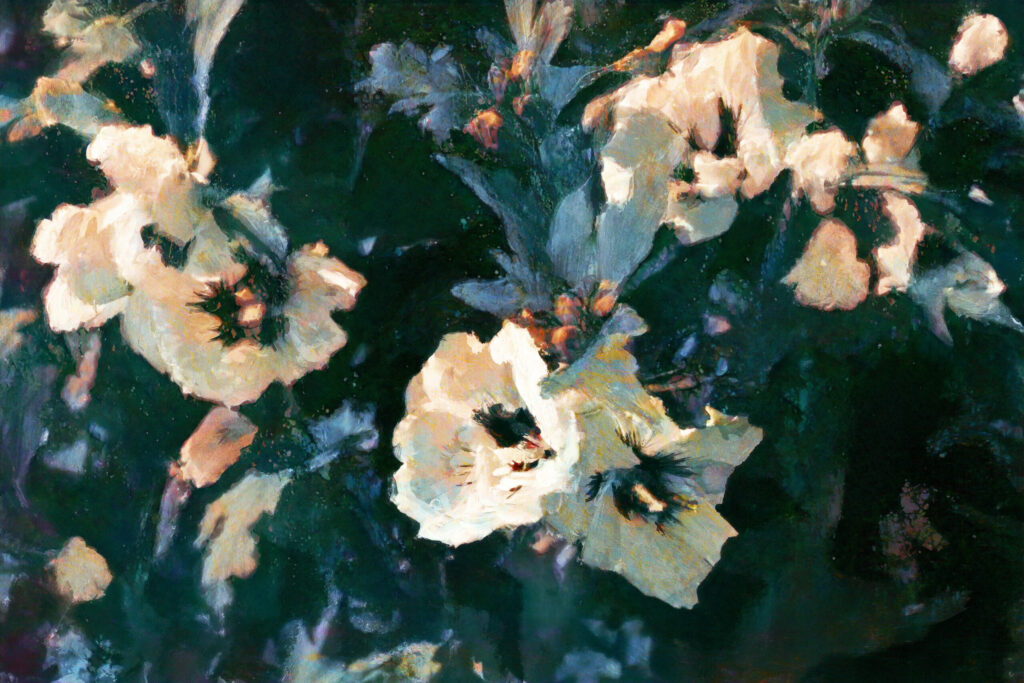About
I was trained at the Beaux-Arts de Tours and the cinema department of Paris VIII – Vincennes. I began my career as a video editor and special effects artist, working on the Paintbox and Quantel’s Harry. A pioneer in the use of digital image processing software since their inception, I was instrumental in integrating these tools into professional video production. Subsequently, I became the creative director of a CGI studio in Paris, and later worked as production and post-production director on three 3D animated feature films.
My professional life has always been dedicated to visual creation, both static and animated, constantly adapting to technological advancements. This experience naturally shaped my artistic approach, which is rooted in the use of technology to explore my interests in representation and image. My current work merges painting and photography, creating hybrid digital artworks that challenge our perception and gaze upon these two art forms.
I merge painting and photography in my digital works, creating what I call “photographic paintings” or “pictorial photographs.” By using these two practices, I aim to make the viewer question the different perspectives we have on these arts. A photograph consists of pixels, while a painting is made up of brushstrokes. I “de-pixelize” my photographs by replacing the pixels with strokes, translating one visual language into another.

Although my work is digital, I sometimes incorporate traditional techniques such as acrylic and watercolor. My goal is to create works that float between photographic and pictorial impressions, exploring the concept of “gaze.” . I consider myself an “imagist,” playing between these two worlds, trying to paint the floating nature of our gaze when faced with these mixed representations.